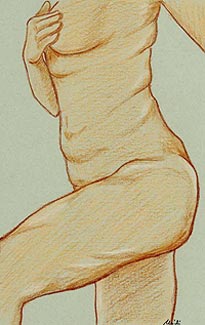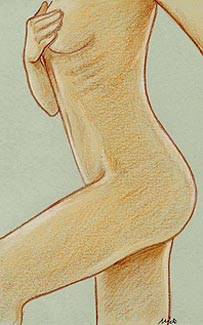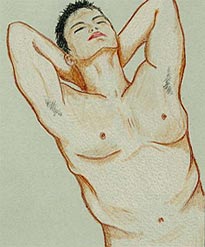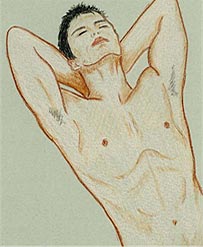Liposuction and liposculpture, more commonly known as body remodeling surgery, are by far the most requested interventions in cosmetic surgery. Liposuction allows the body to be sculpted by removing unwanted fat deposits from specific areas such as the abdomen, hips, buttocks, thighs, knees, upper limbs, chin and neck.
The liposculpture is an evolution of liposuction because it uses the microcannules to “sculpt” very selected areas of the body. Although body remodeling surgery is not a substitute for diet and exercise, liposuction and liposculpture allow you to remove localized adiposities that cannot be eliminated in other ways. Liposuction and liposculpture are therefore not used to lose weight but to reshape the body.
WHO IS THIS TYPE OF SURGERY FOR?
Body remodeling surgery is indicated for those who have a good physical shape and a compact and elastic skin but have localized fat deposits in some areas of the body that cannot be eliminated with diet or exercise.
ARE THERE ANY AGE LIMITS FOR SUBJECTING LIPOSUCTION OR LIPOSCULTURE INTERVENTION?
There are no age limits for undergoing these types of surgery, but older people, whose skin has lost some of its elasticity, generally get lower results than younger patients. For overweight patients it is advisable to undergo a diet first and only after a liposuction intervention.
LIPOSUCTION: THE TECHNIQUE
Most surgeons use the Wet technique for liposuction because it allows you to better understand the shapes, without deforming the area due to excessive infiltration.
WHAT OTHER INTERVENTIONS CAN BE CARRIED OUT TOGETHER WITH LIPOSUCTION AND LIPOSCULTURE?
Body remodeling surgery can be performed alone or in combination with other surgical techniques such as tummy tuck, thigh and arm lift, face lift, reductive mastoplasty or other cosmetic surgery.
WHAT ARE THE RISKS AND COMPLICATIONS OF LIPOSUCTION INTERVENTION?
Many thousands of liposuctions and liposculptures are successfully performed worldwide every year. When this type of intervention is performed by a plastic surgery specialist who is expert in body contouring and authorized structures, the results are generally very good.
It is important, however, not to take this surgery lightly and not to fall into the temptation to contact non-specialist doctors who perform low-cost operations in unauthorized structures (beauty centers, clinics, etc.) because it is still a true and precisely where complications (infection, hematomas) and risks are rare, but they can happen and be easily solved only if the intervention is performed by a specialist in plastic surgery within duly equipped structures. To decrease the risk of complications however, it is essential to carefully follow the advice and instructions that the surgeon will give you before and after the operation. Smokers should reduce the use of cigarettes because smoking can increase the risk of complications and healing delays for liposuction and liposculpture interventions.
HOW IS THE PRE-OPERATIVE VISIT DONE?
The liposuction and liposculpture are very personalized interventions, as such, needs a meticulous specialist examination. During the first visit, the surgeon will have to evaluate the quantity and location of the fat deposits and the elasticity of your skin and explain the objectives and aesthetic results that can be obtained.
The cosmetic surgeon will also have to evaluate your health conditions to exclude the presence of alterations (high blood pressure, coagulation or scarring problems) that could affect the final result of the liposuction and liposculpture intervention. Before the operation you will receive specific instructions relating to pre and post-operative nutrition and the intake of drugs, alcohol and cigarettes. At the end of the visit, the surgeon, in agreement with you, will choose the most suitable remodeling technique for your case.
WHAT TYPE OF ANESTHESIA IS PRACTICED?
Depending on the location and extent of the areas to be treated, liposuction and liposculpture can be performed under local anesthesia with sedation (this means that you will be awake but relaxed and insensitive to pain), under loco-regional anesthesia or under general anesthesia. The surgery is usually performed on a day-hospital basis, but sometimes hospitalization for one or two nights may be necessary, especially when general anesthesia is practiced.
WHERE ARE THE ENGRAVINGS MADE?
In both liposuction and liposculpture the incisions are very small and are made in the folds and furrows of the body in order to remain absolutely invisible.

hips, buttocks and thighs.


abdominal lipodystrophy .

HOW LONG DOES THE LIPOSUCTION AND LIPOSCULTURE INTERVENTION LAST?
The duration of the intervention varies greatly depending on the extent of the areas to be treated. The liposuction procedure is not painful and ends with a compression sheath that must be maintained for about three weeks. Sometimes there may be a slight local nuisance that will disappear in a few days.
WHAT IS THE POST-OPERATIVE COURSE?
In the intervention of liposuction and liposculpture, healing occurs gradually and progressively. In the 48 hours following the operation you will have to rest. Starting from the third day you can resume a normal life but avoid strenuous activities, saunas and Turkish baths. After 4-5 days you can resume your work if not too tiring.
Initially, the treated area will appear more swollen than the final result but within 2-3 weeks after the edema and swelling will gradually disappear. Starting from the third week you can gradually resume all normal activities including sports. The result, appreciable already after the first three weeks, will be definitively achieved after about three months from the liposuction procedure.
WHAT TYPE OF RESULT CAN BE OBTAINED?
The result of liposuction and liposculpture is generally very good and highly satisfying for the patient. If you have the foresight to follow a balanced diet and exercise regularly, the results obtained with this type of intervention will be practically permanent.
COSTS OF LIPOSUCTION
I highly recommend to be wary of low-cost cosmetic surgery which is such precisely because the materials and healthcare facilities are certainly of low or poor quality.
FAQ LIPOSUCTION, LIPOSCULTURE, LIPOFILLING
Q. Is liposuction a safe intervention?
A. Many thousands of liposuctions and liposculptures are successfully performed all over the world every year. When this type of intervention is performed by a specialist in plastic surgery expert in body contouring, in authorized structures, with due anesthesiological assistance, the results are generally very good. It is important, however, not to take this surgery lightly and not to fall into the temptation to contact non-specialist doctors who perform low-cost operations in unauthorized structures (beauty centers, clinics, etc.) because it is still a true and where complications (infection, hematomas) are rare but can occur and be easily resolved only if the intervention is performed by a specialist in plastic surgery at the
Q. Can liposuction be an alternative to diet?
A. No. Liposuction and liposculpture allow to remove localized adiposities which cannot be eliminated in other ways, but do not constitute an alternative to the diet. Often, however, the modeling achieved with liposuction and liposculpture is the stimulus to take better care of your body and weight.
D. Wanting to undergo a liposuction of the thighs, I would like to know if it is useful to follow a diet before the surgery.
A. I generally advise my patients to undergo liposuction when they have reached a weight they think they can maintain. It is a good rule, however, even after the intervention to follow a balanced diet and exercise.
Q. How much pounds can you lose with liposuction?
A. Liposuction is not a surgery that is used to lose weight but to reshape the body and eliminate accumulations of fat localized in some specific areas of the body and which cannot be removed with diet or exercise. Generally, during a liposuction or liposculpture, no more than 3-4 liters of fat are sucked.
Q. Is the aesthetic result obtained with liposuction definitive or is it possible after some time to reform the previously eliminated fat pads?
A. The result of liposuction and liposculpture can be considered permanent as long as you have the foresight to follow a balanced diet and exercise regularly. In fact, liposuction and liposculpture permanently eliminate a certain amount of fat cells (fat), but if you have a tendency to gain weight and do not keep your diet under control, the remaining fat cells will end up expanding, creating again unsightly bearings.
Q. In what period is it preferable to undergo a liposuction?
A. Liposuction can be performed throughout the year, but it is preferable, as for all cosmetic surgery, to do it in winter to avoid the negative effects of photo-exposure (pigmentation of scars and excessive heat and edema of the treated areas).
Q. Is liposuction a painful surgery?
A. No. Immediately after the operation, a feeling of soreness will be felt for 2-3 days in the treated area which varies according to the people and the extent of the intervention. However, it is a bearable pain that can be alleviated with analgesics.
Q. I have heard that a sheath must be worn after liposuction. It’s true? And for how long?
A. Immediately after the operation, it is necessary to wear a compression sheath or 140 den elastic stockings for at least a week. It is an absolutely not annoying garment that serves to better compress the aspirated tissues and limit swelling. After removing the points, it is advisable to wear the sheath again for 3-4 weeks depending on the extent of the fat removed and from the site where the operation was performed.
Q. What is the difference between liposuction, liposculpture and liposuction?
A. Liposuction and liposuction are synonymous and allow the body to be sculpted by removing unwanted fat deposits from specific areas such as the abdomen, hips, buttocks, thighs, knees, upper limbs, chin, cheeks and the neck. Liposculpture is an evolution of liposuction in that it uses microcannulas to “sculpt” very selected areas of the body. Sometimes liposuction and liposculpture can be performed in association with the technique of lipofilling (also called lipostructure) which consists of withdrawing small quantities of fat with a thin needle or cannula which are then injected into the areas that have slight depressions.
Q. I am 39 years old and despite constant diets I always have very large calves, knees and ankles. I would like to know if my problem can be solved with liposuction or if there are other types of surgery or aesthetic medicine treatments that can reshape the lower legs.
A. Since the liposuction technique consists in the aspiration of the fat deposits located in some specific areas of the body (e.g. thighs, buttocks, knees, etc.), if the right indications exist, it is possible to obtain good results even with liposuction of the calves and knees. However, if the volume of the calves and ankles is caused by a particularly developed bone and muscle structure and not by a localized accumulation of fat, liposuction is not able to bring about the desired improvement. Unfortunately in plastic and aesthetic surgery there are no other techniques to reduce the volume of the calves and ankles,
Q. How long can I go back to work after a liposuction?
A. In liposuction, the duration of convalescence depends on the extent and number of areas treated and the amount of fat that is aspirated. Generally starting from the third day it is possible to resume a normal life but avoiding strenuous activities. After 4-5 days you can resume your work if not excessively tiring and starting from the third week you can gradually return to all normal activities including sports.
Q. I have circulation problems and would like to know if I can still undergo liposuction?
A. Liposuction and liposculpture can generally also be performed in patients with circulation problems. In these cases, however, I always recommend an arterial and venous Doppler examination to exclude vascular pathologies in progress.
Q. What indications should be followed before undergoing a liposuction?
A. As with any type of surgery, smokers should reduce the use of cigarettes before surgery because smoking can increase the risk of complications and delayed healing. It is also advisable to stop taking NSAID derivatives that could promote bleeding such as aspirin, aulin, moment, etc.
Q. Is it necessary to do lymphatic drainage after liposuction?
A. After liposuction or liposculpture it may be useful, but not essential, to perform lymphatic drainage to accelerate healing and reduce swelling faster, but it must not be performed before two months after surgery.
Q. Can liposuction be done in hospital or in structures affiliated with the National Health Service?
A. No. Liposuction cannot be done with the assistance of the NHS.
Q. I have the classic “orange peel” skin and would like to know if liposuction can improve the texture of my skin?
A. No. Liposuction works below the dermis by eliminating the accumulation of fat, but it is not able to smooth or improve the quality of the skin. FAQ cosmetic surgery of the calves
Q. I am 39 years old and despite constant diets I always have very large calves, knees and ankles. I would like to know if my problem can be solved with liposuction or if there are other types of surgery or aesthetic medicine treatments that can reshape the lower legs.
A. Since the liposuction technique consists in the aspiration of the fat deposits located in some specific areas of the body (e.g. thighs, buttocks, knees, etc.), if the right indications exist, it is possible to obtain good results even with liposuction of the calves and knees. However, if the volume of the calves and ankles is caused by a particularly developed bone and muscle structure and not by a localized accumulation of fat, liposuction is not able to bring about the desired improvement. Unfortunately in plastic and aesthetic surgery there are no other techniques to reduce the volume of the calves and ankles,
Q. I am a 22 year old boy passionate about bodybuilding. My problem is that despite many hours of training per week, I can’t increase the volume of my calves. Is there a remedy for my problem?
A. Yes. The increase in volume of the calves can be achieved by implanting silicone gel implants (similar to those used in breast augmentation) or by transferring adipose (fat) tissue taken from a part of your body (lipofilling).
Q. How do you apply for liposuction surgery funding?
A. It is possible to request the payment in installments of the liposuction intervention , asking your cosmetic surgeon what are the methods of financing cosmetic surgery in cases where there is no immediate financial availability to pay for an intervention.
Q. Can men also undergo liposuction?
A. Yes, men can also undergo liposuction, indeed male liposuction is one of the most requested interventions together with rhinoplasty, blepharoplasty (eyelids) and gynecomastia (female breast in a man). Man has the characteristic of accumulating fatty tissue mainly in the abdomen, hips, pectoral region and in the chin area, less often in the arms and thighs.
The anatomical areas most treated by the plastic surgeon in man’s liposuction are, therefore, the hips, the abdomen, the pectoral region to define the pectoral muscles and the chin well. Thigh fat is less often treated.
The cost of liposuction in humansit is very variable and depends a lot on the areas that are operated and on the duration of the intervention. It is one of the surgeries that has greater variability in prices because a liposuction can cost from € 3,000 to € 10,000.